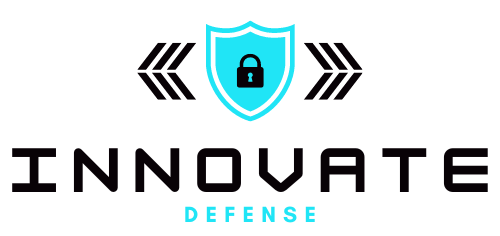Cybersecurity demands seem to grow exponentially by the year. As new threats emerge and more threat actors throw a hat into the ring, organizations need to be even more diligent about protecting themselves. Some are turning to SOAR platforms to help them better manage their cybersecurity strategies. SOAR providers are stepping up with the latest and greatest software platforms capable of supporting organizations of all sizes.
What a SOAR Platform Is
SOAR is an acronym that stands for ‘Security Orchestration, Automation, and Response’. A SOAR platform is a software platform deployed by a security operations center (SOC) to help them better manage, coordinate, and automate responses to cybersecurity threats and incidents. The whole point of deploying such a platform is to bring together numerous cybersecurity tools that are otherwise not united in a centralized way.

SOAR integration streamlines cybersecurity efforts in three ways:
- Connecting disparate security tools
- Automating repetitive tasks
- Providing easier management through a centralized dashboard
A good way to understand what SOAR platforms do is to compare them to Customer Relationship Management (CRM) packages. A CRM package brings together lead generation, sales, contact management, and more into a single environment. It equipped sales teams to do what they do without having to utilize half-a-dozen different tools.
Soar integration does the same thing for security teams. It is made possible by way of the three components listed in SOAR’s actual name.
SOAR at Its Core
The three previously mentioned components are at the very core of the SOA principle. They are:
1. Orchestration
Orchestration is the principle of integrating a variety of security tools and systems in such a way as to guarantee that they all contribute to a unified workflow. Everything from firewalls and EDR systems can be integrated with a comprehensive platform.
In some cases, Open-Source Intelligence (OSINT) tools can be integrated with a SOAR platform. DarkOwl’s dark web OSINT tools certainly can be. By incorporating OSINT, organizations get the benefits of the open-source model at little to no additional cost.
2. Automation
Automation streamlines operations and improves efficiency. In the SOAR environment, automated routines eliminate the need for humans to handle repetitive tasks. Security team members don’t waste time on things like log analysis and ticketing. Instead, automated tools handle those things.
Automated playbooks make it possible for platforms to execute consistent and appropriate responses based on predefined threat scenarios. In so doing, human error is minimized while security team analysts are released to devote themselves to more complex tasks.
3. Incident Response
SOAR integration even contributes to better incident response by standardizing and automating response processes. With faster detection, containment, and remediation, a SOAR platform can help keep threats to a minimum.
When successful attacks are launched, the SOAR platform supports post-incident activities. Automated threat and intelligence sharing, forensic investigation, and incident reporting are all on the table. Everything is done in a centralized environment, thereby keeping everyone in the loop.
What Constitutes a Good Platform
A number of SOAR providers support the cybersecurity industry with their platforms. But off platforms are not created equally. Some are better than others. The million-dollar question is what constitutes a good SOAR platform. A platform should include:
- A Centralized Console – Whether you call it a dashboard or a console, a platform needs a centralized interface through which workflows, alerts, and incidents can be seamlessly managed.
- Automation Tools – An effective platform offers both playbook and workflow automation tools. The tools should facilitate the creation and execution of automated procedures for the most common threats.
- Threat Intelligence – A platform should have either built-in threat intelligence capabilities or the ability to integrate with existing threat intelligence tools. Threat intelligence is too important to leave out of the equation.
- Case Management – A platform should also have the ability to handle systematic documentation and analysis of all incidents. Accurate and timely documentation is necessary to improve situational awareness.
- Reporting Capabilities – A good platform offers metrics and reporting capabilities. The system gathers and analyzes data then reports that data through customizable views in the dashboard. Security teams should be able to customize the metrics they want to track.
These five things are the foundation of a solid SOAR platform. Platforms with additional features might be more attractive depending on what an organization wants to accomplish. But the five listed here constitute the bare minimum.
Solid Reasons for Investing in SOAR
CSO’s and cybersecurity experts in need of convincing can find some very solid reasons for investing in a SOAR platform. At the top of my personal list is increased efficiency. Keeping up with a quickly evolving cybersecurity environment is not easy. However, it is easy to get bogged down by inefficiencies.

Through automation and centralization, a SOAR platform improves efficiency. Security teams can do more with less. They should even become better at what they do because there are fewer distractions.
Faster response times are another good reason. Through automation, SOAR platforms reduce both mean time to detect (MTTD) and mean time to respond (MTTR). As a result, threat impacts are minimized.
Need more? Here are yet three additional reasons to invest in a SOAR platform:
- Improved Consistency – The SOAR principal ensures uniform and consistent response to incidents through the use of standardized playbooks. Variability and human error are both reduced.
- Improved Collaboration – Teams across the security spectrum enjoy better collaboration thanks to SOAR integration that brings all their tools and communications into a centralized location.
- Centralized Management – SOAR platforms consolidate threat data and incident management in that same centralized location. In so doing, the platform reduces noise. It can even eliminate false positives.
SOAR platform integration seems like it should be a no brainer for modern security teams. It takes a fragmented approach to cybersecurity and unifies tools, personnel, and strategies for a more consistent and streamlined approach. The result is a better cybersecurity system that is more effective at stopping threats. Given the opportunity, why would an organization not seriously consider investigating and investing in SOAR?







